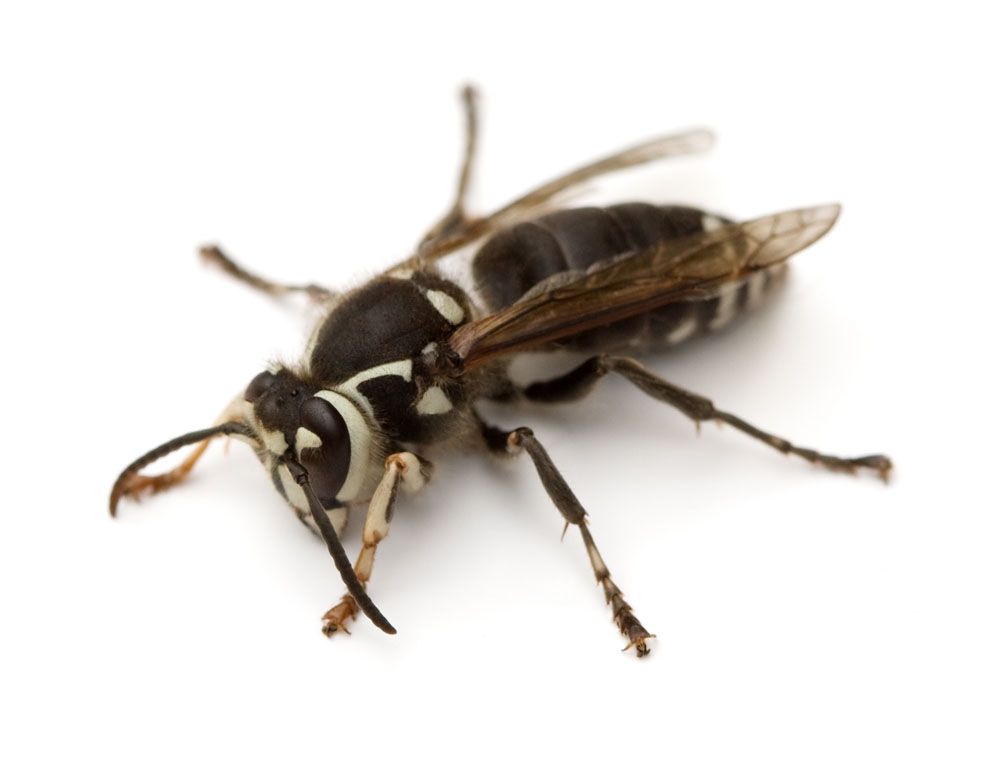
Baldfaced Hornet – Dolichovespula maculata
Bald Faced Hornet: Appearance, Territory, Damage and Life Cycle
Latin Name: Dolichovespula Maculata
Appearance: The bald-faced hornet, Dolichovespula Maculata, is a kind of social paper wasp in the Vespidae family. The bald-faced hornet, despite its common name, is not a hornet at all, but rather a member of the same family as yellowjacket wasps. Adult bald-faced hornets have black bodies and white faces, as well as white legs and white patterns on the tips of their abdomens. Workers can grow to be three-quarters of an inch (19 mm) long, but the queen is usually bigger. Larvae are white, squishy, legless grubs that live in hexagonal cells of the paper nest. Pupae, which are likewise limited to these cells, are white at first and darken as they mature.
Hosts Plants: Tree hollows and thick bushes and trees are common places for bald faced hornet nests. A queen seeking for a place to spend the winter may migrate indoors via holes in the roof or around the eaves. Yards with a lot of covered spaces are more likely to get infested.
Territory: The bald-faced hornet is found across the United States and Canada, although it is most abundant in the southern United States, especially Louisiana. With the exception of the European hornet (Vespa Crabro), which was imported to eastern North America during the nineteenth century, true hornets are exclusive to the Old World. Unconfirmed reports imply its presence in Louisiana, although its installation is questionable. It has been recorded in various neighboring states.
Damage Insect Cause: Bald-faced hornet colonies can include anything from 100 to 400 individuals. The colony’s workers are in charge of gathering insects to bring back to the growing larvae to feed on. Bald-faced hornets are thought to be useful since they prey on pest insects and assist to keep their populations under check. Trying to get rid of bald-faced hornets on your property is not a smart do-it-yourself project. Those pests will assault and sting anyone who poses a threat to their safety. Even tiny nests can be hazardous, but large-scale coordinated attacks normally do not occur until the nest is rather large.
Life History and Habits: Like other members of the order Hymenoptera, the bald-faced hornet undergoes full metamorphosis. This cycle begins in early spring, when the overwintered queen builds a tiny beginning nest of hexagonal paper cells. She puts an egg in each of the cells. Each egg develops into a tiny larva six days later. Under normal conditions, the larvae develop and molt (shed their exoskeletons) multiple times over the next eight days before transforming into pupae. The pupal stage lasts nine to ten days before a young adult wasp emerges from the cell and begins her tasks in service to the colony.
